BuddingBudding is an asexual reproduction in which a new organism is produced from the old one. Budding is the process in which a bud is formed, and it detaches itself to form the parent and further develops itself as an individual new organism. In budding, a node is developed form the parent, growing a little bit. It detaches itself from the parent and develops itself identical to the parent when it matures. "Budding is a form of asexual reproduction in which a new organism develops from a bud or outgrowth due to cell division at a particular place. New organism remain attach to the parent until it get mature enough to grow itself as an adult organism individually. The "offspring" is a clone of parent that involve sex and somatic cells that divide mitotically. New organism is build form the new sets of cell with same genetic composition. Budding also named as gemmation." Examples of budding Budding is associated with unicellular or multicellular organisms like yeast, bacteria, hydra, corals, flatworms, jellyfish, and sea anemones. These all reproduce through the budding process. Difference between binary fission and budding Budding is different from binary fission as in binary fission; cells divide to produce two daughter cells of equal unilateral growth. The original parent cell split into two daughter cells of the same size, but in budding, a new cell is generated with the old one, smaller in size than the old one. 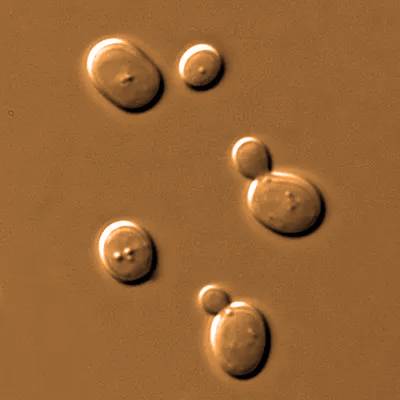
Binary fission Diagram Let's learn about
Budding in PlantsIn plants, budding is a method of producing a new variety of plants by mixing the characteristics of two plants, and this method is often called grafting. It is an artificial method of vegetative and asexual reproduction in plants. Budding in plants is necessary for vegetative reproduction occurs naturally, but with horticulture, it can be induced artificially. With the help of the grafting technique in which the bud of one plant is inserted at the bark of the system of another plant, and then both the plant grows together. The one plant (the rootstock) is converted into another plant type. 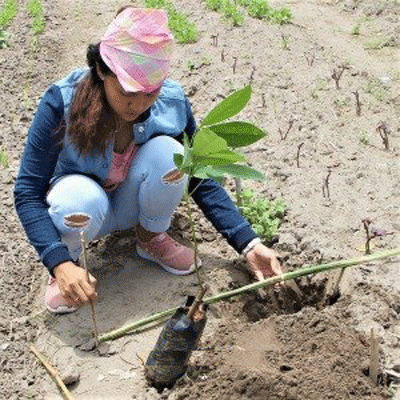
Numerous clones are produced with the help of this method( from a single piece of stem or twig), but this cloning can take a long time to develop incorrect sizes for out planting than a grafted seedling. Various techniques are used for the budding process applicable to growing new plants. There are different methods of budding in plants. T-Budding: T-budding is a common budding method in citrus, roses, and peaches. In this budding, a T-shaped cut is given to the plant's shoot just as deep on the bark, and a bud is inserted under the bark in this cut. The stem and inserted bud are tied together with a polythene strip, and the portion of the active bud is left uncovered for sprouting. Inverted-T-Budding: This method is inverse of T- budding in which T- cut is given to the rootstock seedling, and bud is inserted from below upward. Patch Budding: A rectangular patch is removed in this budding from the rootstock seedling (at the height of 20 cm). The same-sized patch bud is taken, placed over the stock, and tied. This process is a little time-consuming, but still, this process is very successful for bud guava and data. Ring Budding: In this budding, a ring is removed from the rootstock. It is commonly seen in the peach and mulberry fruit as a ring of bark is removed from the top of the beheaded rootstock seedling (grafting at the height of 15-20 cm); similarly, ring (along with bud) taken from scion and inserted to the rootstock. Chip-budding: When cell sap flow is too low, then chip budding is converted out, and it is the last option when budding is not possible with another method. Forkert Budding: It is slightly different from patch budding; the patch is not removed from the rootstock (it is left attached from outside). A bud is placed on the bark patch, and a little portion of the patch is removed in a flop in the sprouting of bud. Process of Budding The budding process in plants consists of the following steps:-
Budding in FungiFungi is not a single organism. It is the kingdom of an organism ( eukaryotic) such as mushrooms, yeast, molds, smuts, etc. There are 1.5 species spread across the world divided into several, and some are:- Zygomycetes - The pin molds Glomeromycetes - They form arbuscular mycorrhizas. Ascomycetes - Generally known as cup fungi Basidiomycetes- It consists of larger fungi Fungi have both sexual and asexual modes of reproduction because of their high diversity. Mycelia reproduce through asexual (under adverse environmental conditions through fragmentation) and sexual reproduction. Spore formation is a common form of reproduction in fungi, which spreads and colonizes in new environments. Budding in YeastYeast belongs to the kingdom fungus, and it is a single-celled, non-green, eukaryotic microorganism. Yeast is larger than a bacteria and measures upto 3-4ℳm in diameter, and they reproduce through the budding process (asymmetric budding process). 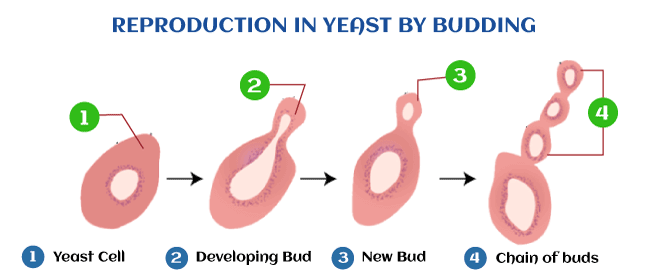
Budding occurs due to an abundant supply of nutrition, here a small bud outgrows from the parent body, and further, the nucleus also gets separated into two parts. One part of the nucleus( smaller one) shifted into the bud. Further, the bud detaches itself and grows into a new cell. Budding in Hydra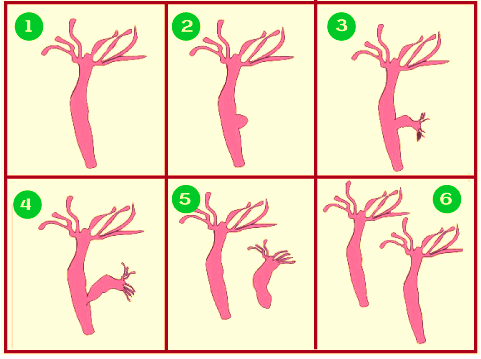
Hydra is the most common example of budding found in freshwater, and it is very small (half a centimeter long only). Hydra body structure is in tabular form composed of a head, distal end, and afoot. Here, reproduction occurs using regenerative cells where a cell expands at a specific location, and a bud outgrows due to division. That bud grows after getting nutrition from the parent hydra and individual hydra and detach itself form the parent. Hydra budding follows the following steps:- 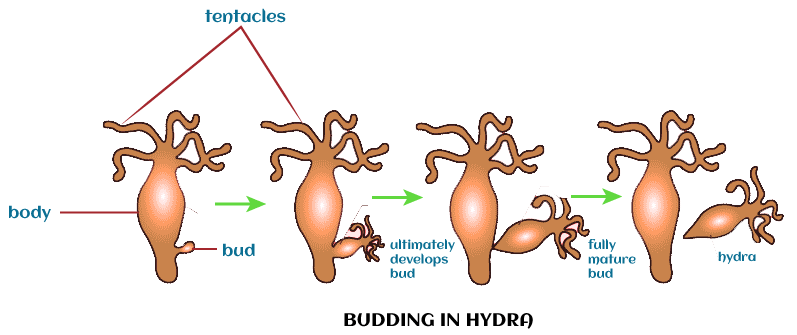
A few examples of hydra species are hydra Vulgaris, oxycnida, utahensis, Canadensis, oligactics.
Next Topic#
|
 For Videos Join Our Youtube Channel: Join Now
For Videos Join Our Youtube Channel: Join Now
Feedback
- Send your Feedback to [email protected]
Help Others, Please Share









